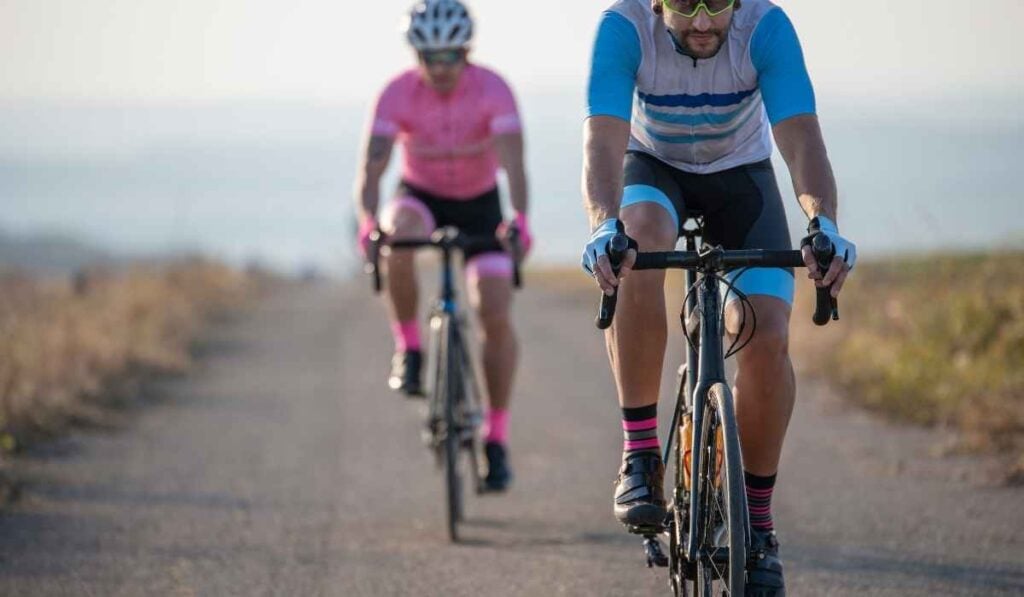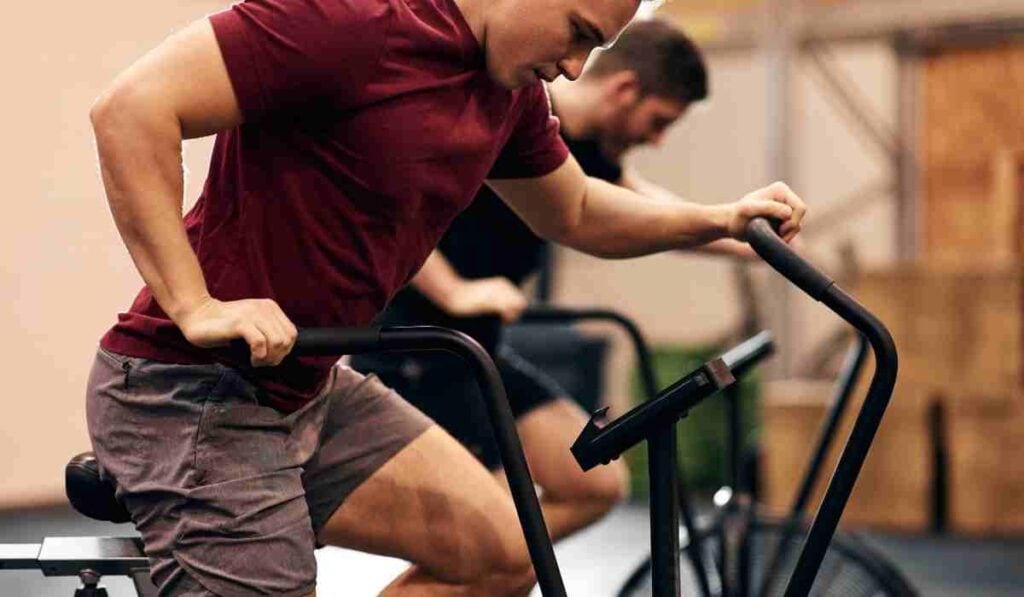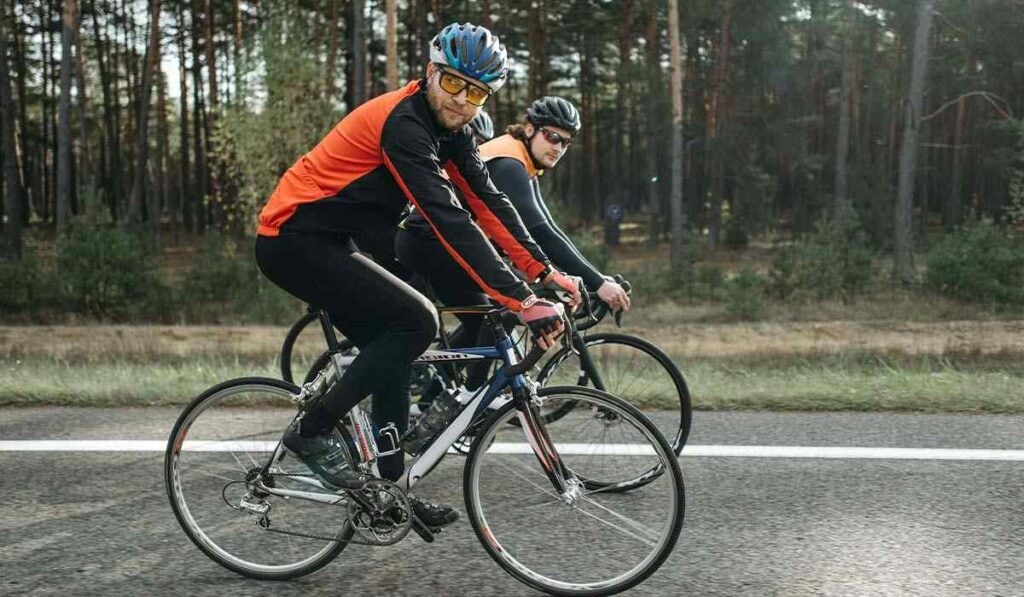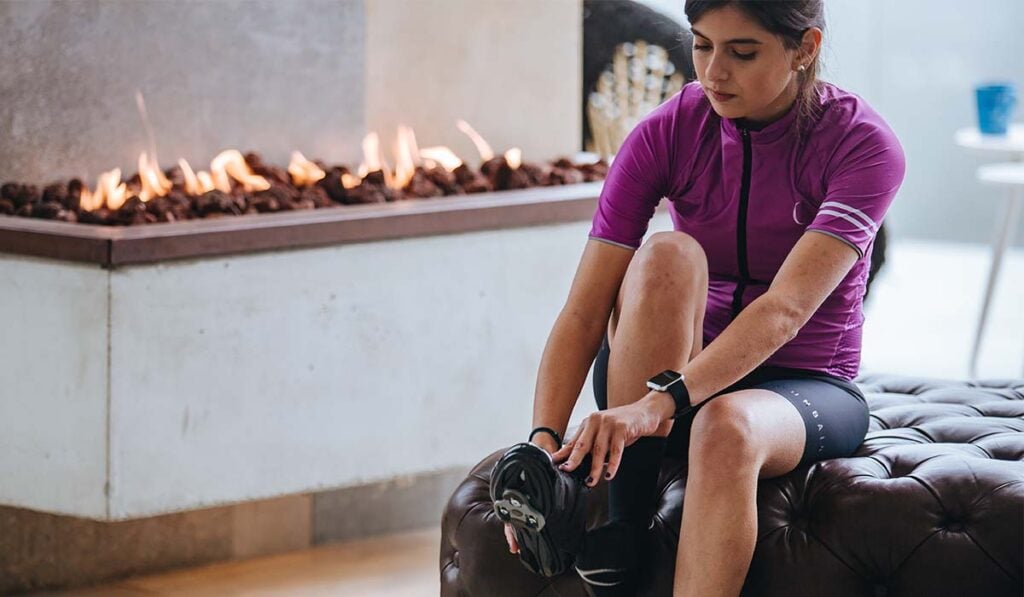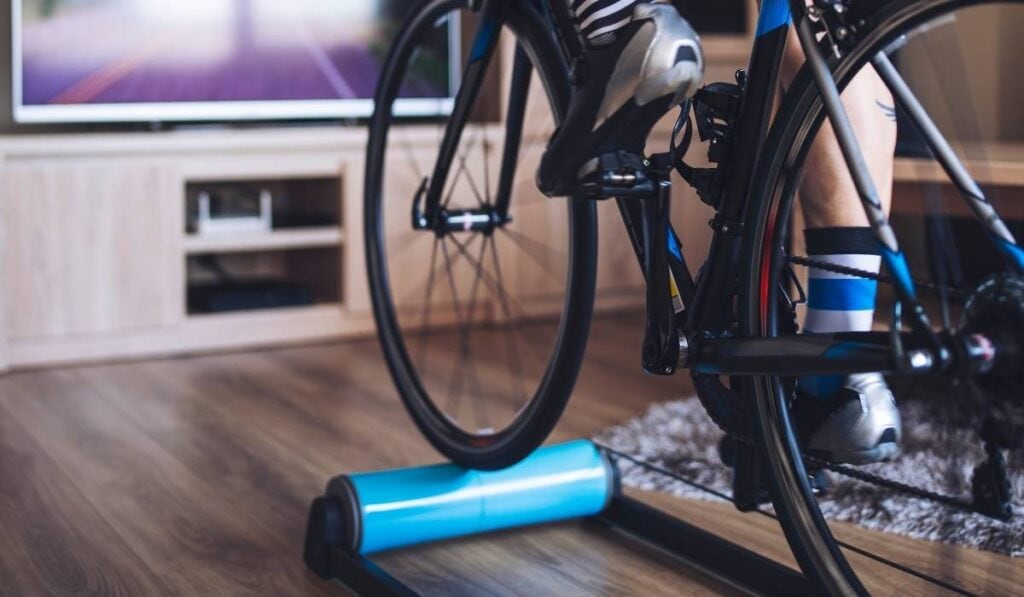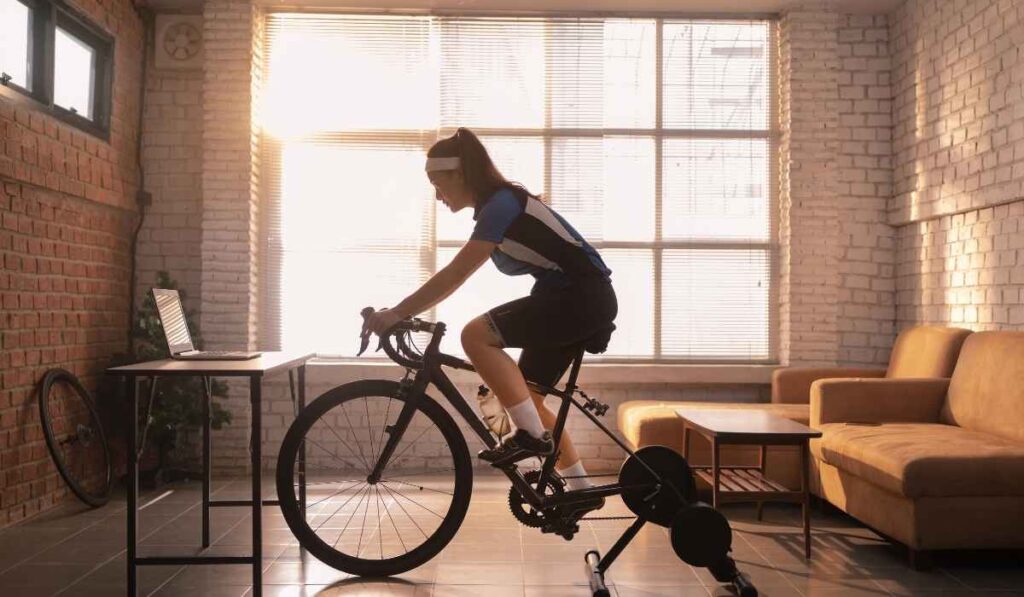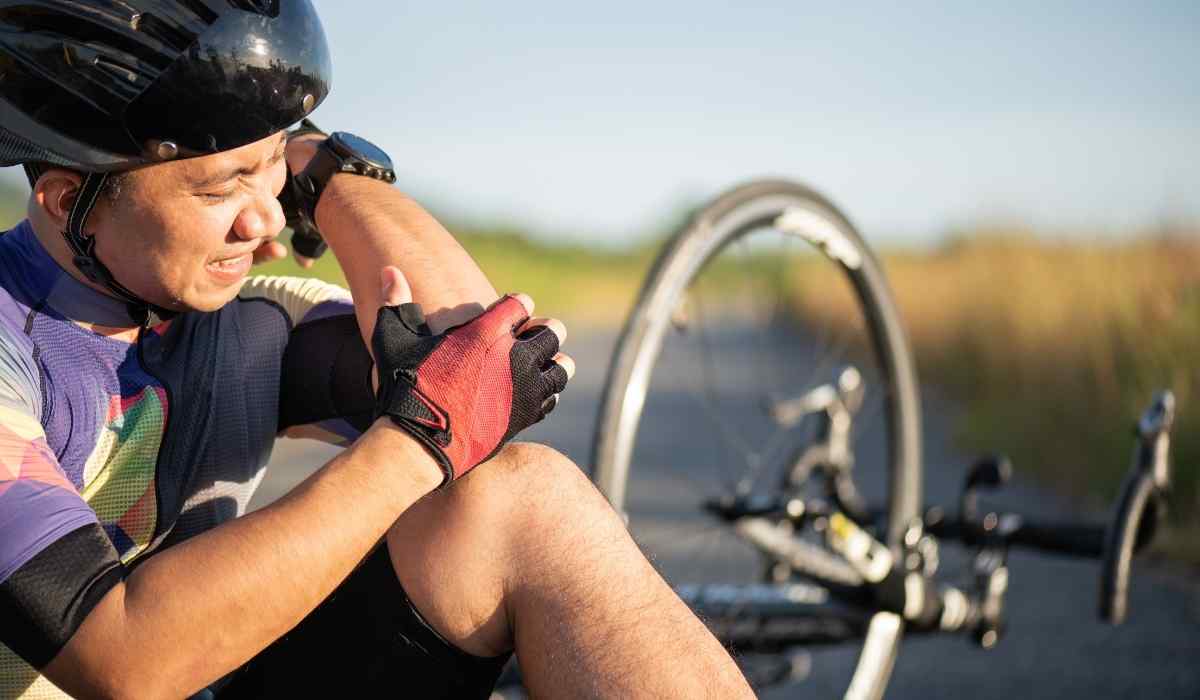
9 Best Exercises to Prevent Cycling Injuries
- What are the most common cycling injuries?
- How do strength training exercises prevent cycling injuries?
- What are the best exercises to help prevent cycling injuries?
- 1. Bird dog
- 2. Bulgarian split squats
- 3. Glute bridges
- 4. Forward lunges
- 5. Plank
- 6. Single-leg RDL
- 7. Russian twists
- 8. Deadbug
- 9. Bodyweight squats
- Safety guidelines while performing strength training exercises
- Key Takeaways:
Unfortunately, sometimes injuries are a part of athletic sports, and cycling is no exception. However, specific strength exercises can help you prevent cycling injuries and maintain more robust and consistent training.
Whether you’ve been cycling for years and are looking for ways to prevent chronic or new injuries, or you’re just starting and would like to get off on the right foot, we’ll help you identify some of the best exercises to prevent cycling injuries.
What are the most common cycling injuries?
According to the University of Rochester Medical Center and the American Orthopaedic Society for Sports Medicine (AOSSM), some of the most common cycling injuries include:7
Neck pain

Neck pain from cycling is often caused by craning your neck up too severely while you ride. However, according to the Cleveland Clinic, a few simple adjustments to your bike and form can fix the issue.1
Take a look at your cycling form. If you’re riding a road bike, pull your stomach in toward your lower back to elongate your torso. Watch your posture and keep your chest slightly lifted while tucking your chin.
And if you’re purchasing a new bike and helmet, make sure they’re both well-fitted to your body. Take your time trying out different bikes and have the staff at a local bike shop help you adjust the seat height, handlebar height, and pedal alignment. These adjustments will ensure that you’re comfortable while riding your bike and prevent neck pain from cycling.
Lower back pain

More than half of cyclists report experiencing lower back pain, according to a 2016 study.2 Most often, this is due to the forward-bent position you’re in while cycling, which can result in injuries, especially if you already have poor posture. Sometimes, if your bike’s saddle is too low or too high, you could also experience back pain as a result.
To reduce lower back pain while cycling, ensure your saddle is the proper height for your body and your handlebars aren’t too far away from you. At the ideal saddle height, your heel should just graze the pedal at the bottom of your pedal stroke. Your saddle is too low if your knee is not at hip level at the top of your pedaling cycle (12 o’clock). You can also change up your hand positions on the handlebars every so often to give your back a break.
If you’re struggling to find the right height for your saddle, you can take your bike to a local bike shop and have it professionally adjusted for your body.
Knee pain

Knee pain is another common complaint among cyclists, especially pain in the kneecap. This type of pain is typically due to overuse. Many studies also suggest that the bike fit and alignment, lack of training, and inappropriate equipment are major contributing factors to knee injuries among cyclists.3
To prevent ongoing knee pain while biking, make sure you don’t pedal toe down. Instead, drop your heel and make sure your knee remains over your foot throughout your pedal stroke to help remove the stress from your knees while you pedal. In addition, have a professional check your saddle level to see if it’s too low. If you feel knee pain in the back of your knees, your saddle might be too high. Properly adjusting it should help!4
Wrist pain

After a long ride, you might experience a numb or tingly feeling in your hands. But if the numbness or tingling continues or you’re suffering from severe wrist or hand pain while cycling, that’s an indicator that something else is wrong.
These symptoms could signify a medical condition called ulnar neuropathy (also called handlebar palsy), caused by compression of the ulnar nerve. It usually happens after long rides where you’ve been keeping your hands in the same position for an extended time. You’ll want to seek professional medical advice for these symptoms, as they can be stubborn to resolve.5
Sometimes, wrist pain can also result from the incline of your saddle. Ideally, your saddle should be parallel to the ground, but some cyclists tilt it slightly forward or back to enhance comfort while they ride. Alternatively, if your handlebars or grips are too low or too far away from your body, you may experience some hand or wrist discomfort. By adjusting the bars to shorten your reach, you may reduce hand and wrist pain. Wearing gloves with gel padding or using padded bar tape may also help cushion the contact area.
Hip pain

Hip pain is often caused by overtraining and overworking the muscles in your behind. Being seated for long periods can compress your arteries or veins (typically the iliac arteries and veins located in the abdomen and pelvic area) and cause a lack of blood flow or damage to blood vessels. Sitting on your saddle incorrectly or suddenly spending a much longer time than usual in the saddle can also cause hip pain.
Although common among cyclists and other athletes, hip pain is relatively easy to fix with adjustments to your riding posture and bike, including the saddle and handlebar positions.6 If you’re just getting into cycling, one of the best things you can do is have your bike professionally fitted to your body and ask for recommendations on your riding posture.
Making sure your saddle is straight, tilted correctly, and at the proper height can help eliminate hip pain and general discomfort while riding. Some cyclists also use cutaway saddles, which are designed to reduce pressure on your muscles and move slightly with your legs as you pedal.
You should also ensure that your saddle isn’t too close or too far away from your handlebars, as either could contribute to hip pain. A professional can help you adjust your handlebars to find a comfortable fit that’s right for your body.
How do strength training exercises prevent cycling injuries?

Preventing injuries is the best way to stay consistent on your bike. Instead of reacting to injuries after they occur and having to dial back your training significantly, adding certain exercises to your routine can help you stay in the saddle regularly.
Strength training exercises are a highly effective way to prevent sports injuries for several reasons.
First, they strengthen your muscles, tendons, ligaments, and bones.8 As the name implies, strength training is an excellent way to increase your overall strength. And stronger muscles, tendons, ligaments, and bones all work to improve your body’s alignment as you exercise. This provides additional protection from injury when your body takes on the stress or shock of your movements during exercise.
And secondly, they reduce bodily imbalances. If you tend to do one type of exercise, you may not use certain muscles as frequently, causing some muscles to become stronger than others. Weak areas of the body are more prone to injury, especially when placed under extreme stress, but strength training can balance the body, reducing your risk of injury.
What are the best exercises to help prevent cycling injuries?
Add these strength training exercises to your weekly exercise routine to help prevent injuries. The best part? You can complete them all without access to a gym!
1. Bird dog
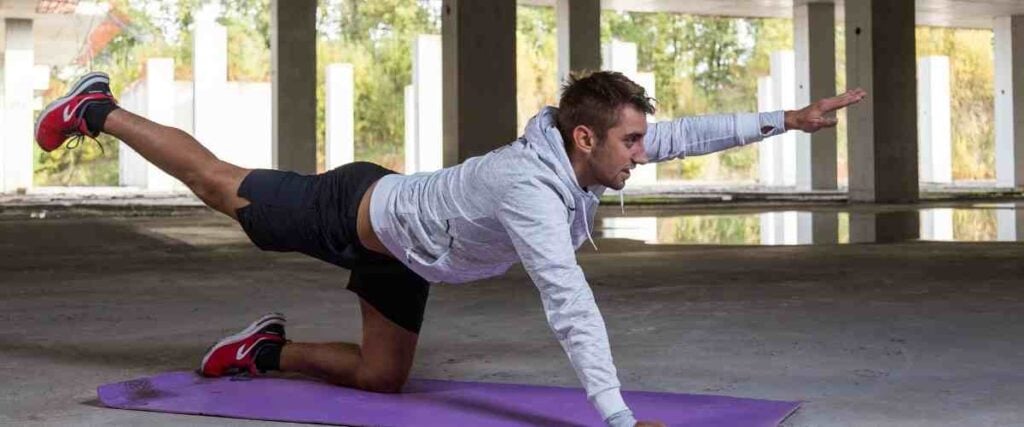
- Come onto your hands and knees on the floor.
- Make sure your back is flat, your arms are directly beneath your shoulders, and your legs are directly beneath your hips.
- Extend your right arm and left leg straight out until they’re parallel with the floor.
- Keep your hips level and activate your core by pulling your belly button inward.
- Slowly return to your starting position and repeat with the other arm and leg.
- Continue alternating arms and legs and repeat 10 times on each side.
2. Bulgarian split squats
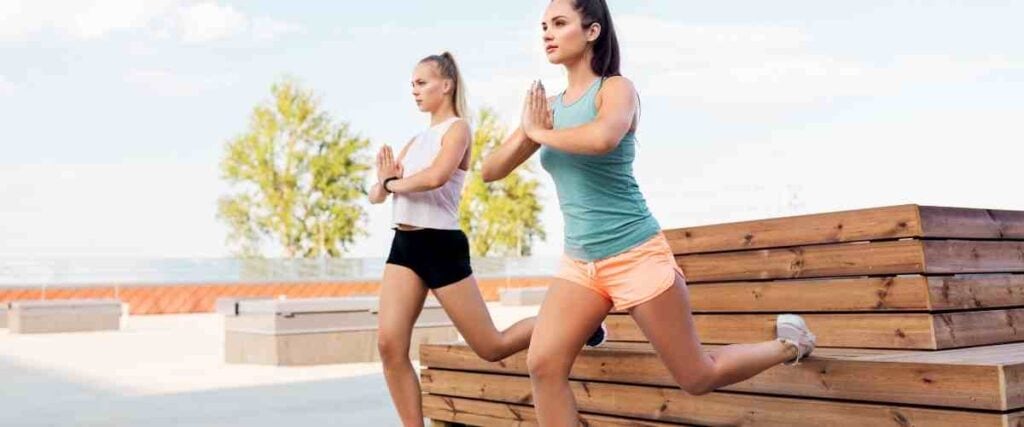
- Rest one of your feet on a bench or seat at knee height.
- Dip down into a forward lunge position of 90 degrees, keeping your knee aligned with your foot. (Make sure your knee doesn’t creep over the top of your toes while in the lunge position.)
- Keep your body upright, and make sure your hips are square with your rear foot on the bench or chair.
- Drive up through your heel and straighten your front knee back into the starting position.
- Repeat 10 to 12 times and switch legs.
3. Glute bridges
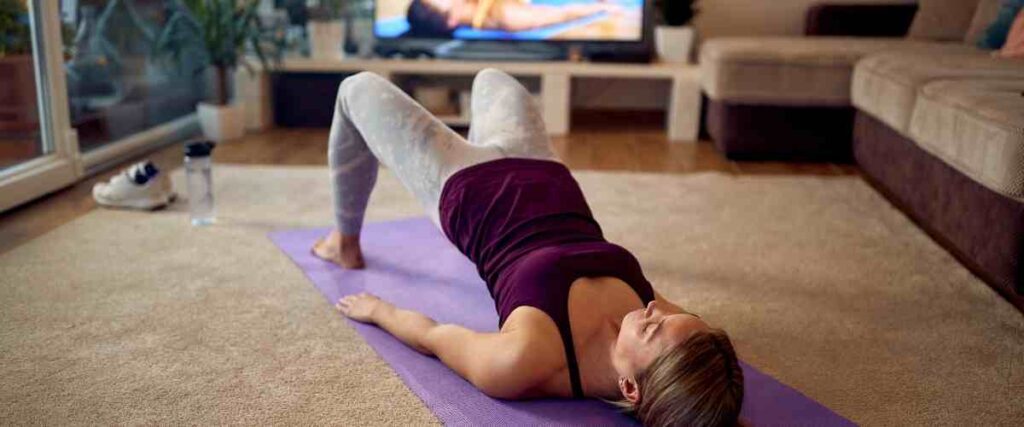
- Start by lying flat on your back.
- Bend your knees until your feet lie flat on the ground.
- Lift your back off the ground by flexing your glutes. Lift until only your shoulder blades and feet are resting on the floor.
- Hold for 5 seconds and relax back down into the starting position.
- Repeat 10 times.
4. Forward lunges

- Stand straight with an upright posture.
- Take a large step forward with your right leg, keeping your back left leg straight.
- Bend your front knee until you feel a stretch in your left hip flexor. Make sure your knee doesn’t protrude over your toes.
- Return to the start position.
- Switch and repeat with the opposite leg.
- Complete 10 to 12 reps on each side.
5. Plank
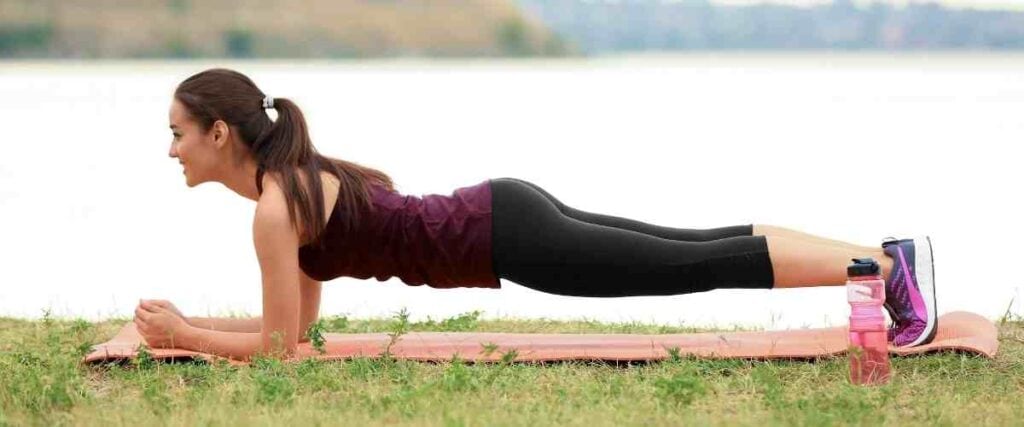
- Start off lying on your belly.
- Lift your body off the ground, stabilizing your body with your toes and forearms.
- Keep your back flat and look straight down at the floor between your hands.
- Hold the position for 20 seconds.
- Come back down to the starting position.
6. Single-leg RDL

- Stand up straight, facing forward.
- Lift one leg up (so you’re standing on one leg) and slowly lean forward, extending the opposite leg behind you and keeping a flat back.
- Slowly return to the starting position and repeat.
Tip: Hold weights in each hand to make this exercise more challenging.
7. Russian twists
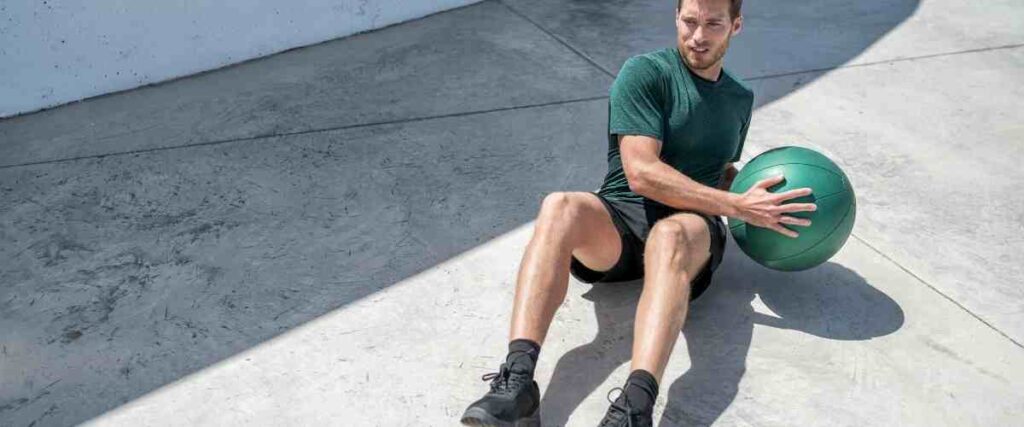
- Sit on the floor with your knees bent.
- Lean back into a 45-degree angle and keep your back straight.
- Hold both hands in front of your chest, tighten your core, and lift both legs off the ground.
- Rotate your arms to your right side, touching the floor near your waist.
- Twist and do the same on the opposite side to complete one rep.
- Repeat 12 reps.
8. Deadbug
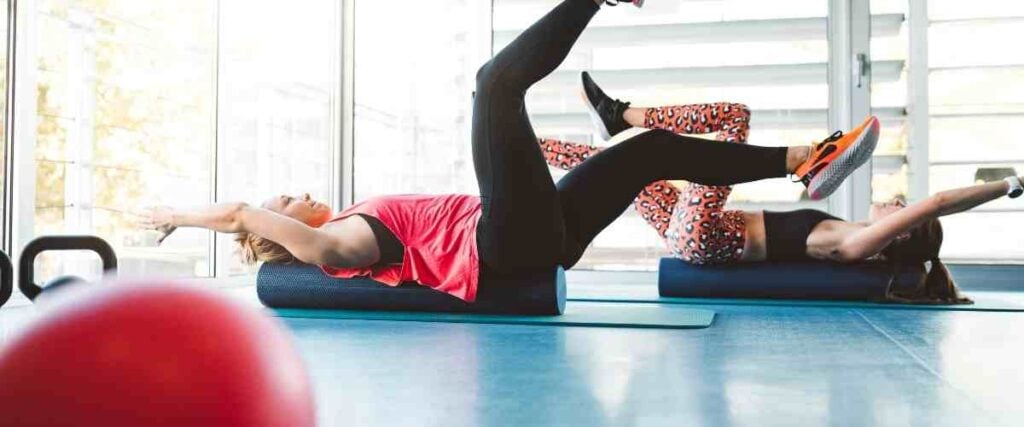
- Start by lying on your back with your arms and legs straight up into the air, with your knees bent at a 90-degree angle.
- Slowly lower your right arm back behind your head. At the same time, straighten your left leg and slowly lower it down to the floor.
- Continue lowering your arm and leg until they hover just above the floor.
- Keep your lower back firmly against the ground and slowly return to the starting position.
- Repeat with the other arm and leg, completing two reps of 10 on each side.
9. Bodyweight squats

- Start by standing with your feet shoulder-width apart.
- Sit back and down like you are sitting in an imaginary chair. Keep your head forward and chest up.
- Keep your knees over your toes and drive your weight into your heels.
- Drive up through your heels and stand back up into the starting position.
- Repeat 10 to 12 times.
Safety guidelines while performing strength training exercises

While the strength exercises listed above are great for preventing cycling injuries, there’s also the risk of injury from the exercises themselves. To avoid that, here are a few essential safety guidelines to follow:9
- Start slowly. When you begin any new form of physical training, your body needs time to adjust and adapt to the challenge. Start off just using your bodyweight or light weights and gradually add weight as it starts to feel more manageable.
- Use proper form. Make sure your body is correctly aligned as you complete each exercise movement. As you add weight, do so in small increments, and if you find that you can’t complete an exercise with the correct form, reduce your weight. If you’re unsure whether your form is correct, consider working with a qualified trainer or gym instructor who can help you learn it.
- Warm up thoroughly. Warming up will help prepare your muscles for physical activity instead of feeling uncomfortably tight or stiff.
- Rest. Without proper rest, you risk overtraining, which means your muscles won’t have adequate time to repair themselves between sessions. As a result, you can end up with chronic injuries, which defeats the purpose of strength training for cyclists.
Key Takeaways:
Strength training exercises are an excellent way to prevent cycling injuries because they strengthen your muscles, tendons, ligaments, and bones and prevent bodily imbalances. Integrating simple exercises like squats, Russian twists, bird dogs, and forward lunges into your weekly routine may help you avoid some of the most common cycling ailments.Sources:
- Team, B. A. S. (2021, December 22). 3 Top Tips to Avoid a Stiff Neck from Cycling. Cleveland Clinic. https://health.clevelandclinic.org/3-top-tips-to-avoid-a-stiff-neck-from-cycling/
- Streisfeld, G. M., Bartoszek, C., Creran, E., Inge, B., McShane, M. D., & Johnston, T. (2016). Relationship Between Body Positioning, Muscle Activity, and Spinal Kinematics in Cyclists With and Without Low Back Pain. Sports Health: A Multidisciplinary Approach, 9(1), 75–79. https://doi.org/10.1177/1941738116676260
- Althunyan, A., Darwish, M., & Abdel Wahab, M. (2017). Knee problems and its associated factors among active cyclists in Eastern Province, Saudi Arabia. Journal of Family and Community Medicine, 24(1), 23. https://doi.org/10.4103/2230-8229.197178
- Mirkin, G. (2022, February 19). Knee Pain in Bicycle Riders. Dr. Gabe Mirkin on Health. https://www.drmirkin.com/fitness/dont-straighten-your-knees-when-you-ride-a-bicycle.html
- British Cycling. (n.d.). Hand and wrist pain on the bike. https://www.britishcycling.org.uk/knowledge/training/health-recovery/article/izn20140820-Physiotherapy-Ask-the-Experts–Hand-and-wrist-pain-on-the-bike-0
- Wadsworth, D. J., & Weinrauch, P. (2019). THE ROLE of a BIKE FIT in CYCLISTS with HIP PAIN. A CLINICAL COMMENTARY. International Journal of Sports Physical Therapy, 14(3), 468–486. https://doi.org/10.26603/ijspt20190468
- Cycling Injuries – Sports Medicine Program – UR Medicine, University of Rochester Medical Center – Rochester, NY. (n.d.). University of Rochester Medical Center. https://www.urmc.rochester.edu/orthopaedics/sports-medicine/cycling-injuries.cfm
- Fleck, S. J., & Falkel, J. E. (1986). Value of Resistance Training for the Reduction of Sports Injuries. Sports Medicine, 3(1), 61–68. https://doi.org/10.2165/00007256-198603010-00006
- Resistance training—preventing injury – Better Health Channel. (n.d.). Better Health Channel. https://www.betterhealth.vic.gov.au/health/healthyliving/resistance-training-preventing-injury



